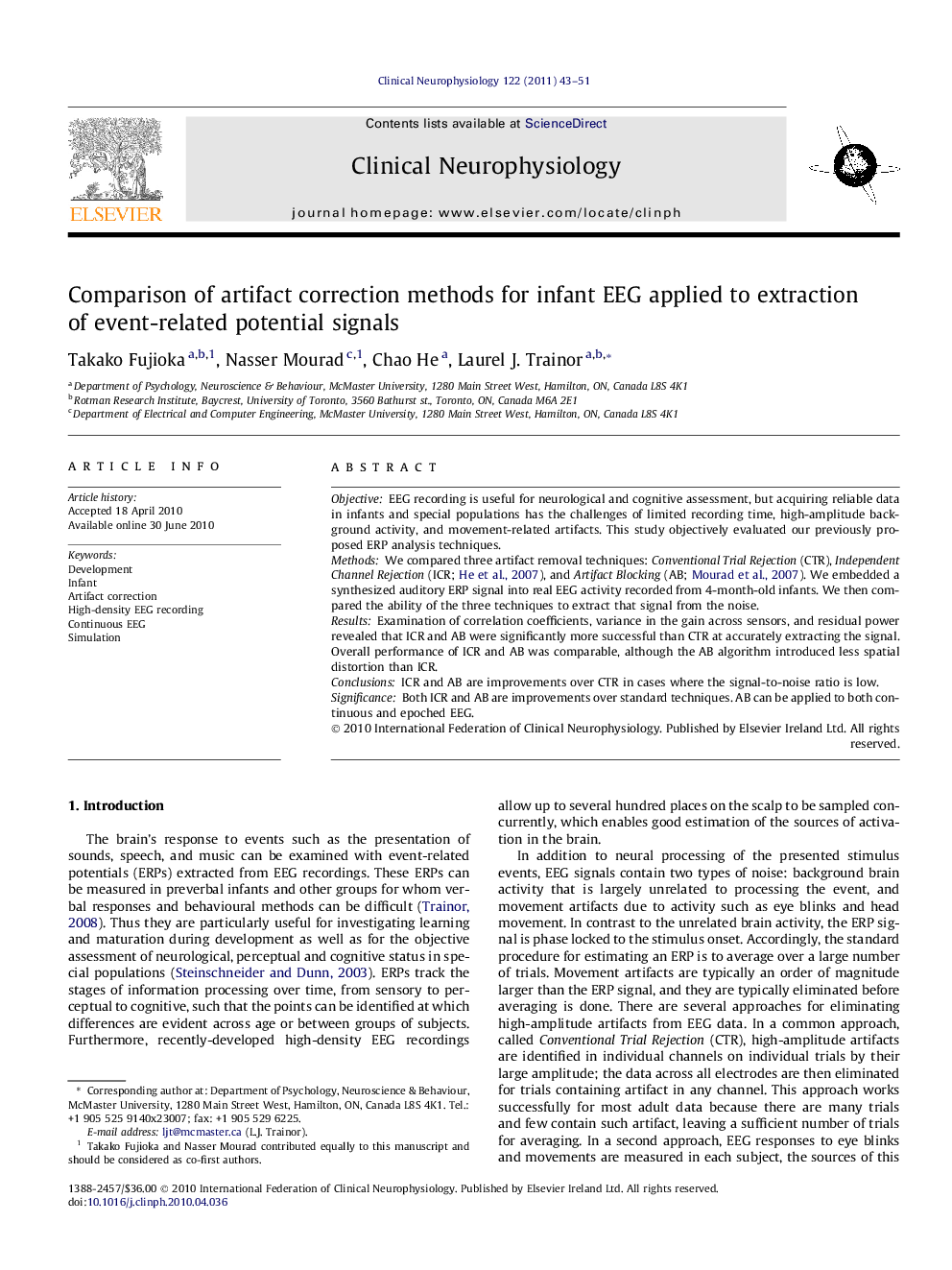| Article ID | Journal | Published Year | Pages | File Type |
|---|---|---|---|---|
| 3044243 | Clinical Neurophysiology | 2011 | 9 Pages |
ObjectiveEEG recording is useful for neurological and cognitive assessment, but acquiring reliable data in infants and special populations has the challenges of limited recording time, high-amplitude background activity, and movement-related artifacts. This study objectively evaluated our previously proposed ERP analysis techniques.MethodsWe compared three artifact removal techniques: Conventional Trial Rejection (CTR), Independent Channel Rejection (ICR; He et al., 2007), and Artifact Blocking (AB; Mourad et al., 2007). We embedded a synthesized auditory ERP signal into real EEG activity recorded from 4-month-old infants. We then compared the ability of the three techniques to extract that signal from the noise.ResultsExamination of correlation coefficients, variance in the gain across sensors, and residual power revealed that ICR and AB were significantly more successful than CTR at accurately extracting the signal. Overall performance of ICR and AB was comparable, although the AB algorithm introduced less spatial distortion than ICR.ConclusionsICR and AB are improvements over CTR in cases where the signal-to-noise ratio is low.SignificanceBoth ICR and AB are improvements over standard techniques. AB can be applied to both continuous and epoched EEG.
